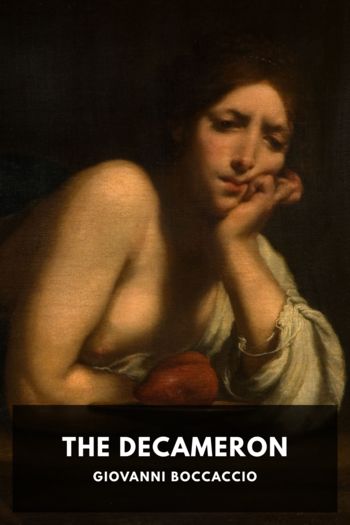author - "Giovanni Boccaccio"

hall tell a story that may appear goodly, now we have heard that of Lauretta? Certes, it was well for us that hers was not the first, for that few of the others would have pleased after it, as I misdoubt me[199] will betide of those which are yet to tell this day. Natheless, be that as it may, I will e'en recount to you that which occurreth to me upon the proposed theme.
[Footnote 199: Lit. and so I hope (spero), a curious instance of the ancient Dantesque use of the word spero, I hope, in its contrary sense of fear.]
There was in the kingdom of France a gentleman called Isnard, Count of Roussillon, who, for that he was scant of health, still entertained about his person a physician, by name Master Gerard de Narbonne. The said count had one little son, and no more, hight Bertrand, who was exceeding handsome and agreeable, and with him other children of his own age were brought up. Among these latter was a daughter of the aforesaid physician, by name Gillette, who vowed to the said Bertrand an infinite love and fervent more than pertained unto her tender years. The count dying and leaving his son in the hands of

Description
In the time of a devastating pandemic, seven women and three men withdraw to a country estate outside Florence to give themselves a diversion from the death around them. Once there, they decide to spend some time each day telling stories, each of the ten to tell one story each day. They do this for ten days, with a few other days of rest in between, resulting in the 100 stories of the Decameron.
The Decameron was written after the Black Plague spread through Italy in 1348. Most of the tales did not originate with Boccaccio; some of them were centuries old already in his time, but Boccaccio imbued them all with his distinctive style. The stories run the gamut from tragedy to comedy, from lewd to inspiring, and sometimes all of those at once. They also provide a detailed picture of daily life in fourteenth-century Italy.

hall tell a story that may appear goodly, now we have heard that of Lauretta? Certes, it was well for us that hers was not the first, for that few of the others would have pleased after it, as I misdoubt me[199] will betide of those which are yet to tell this day. Natheless, be that as it may, I will e'en recount to you that which occurreth to me upon the proposed theme.
[Footnote 199: Lit. and so I hope (spero), a curious instance of the ancient Dantesque use of the word spero, I hope, in its contrary sense of fear.]
There was in the kingdom of France a gentleman called Isnard, Count of Roussillon, who, for that he was scant of health, still entertained about his person a physician, by name Master Gerard de Narbonne. The said count had one little son, and no more, hight Bertrand, who was exceeding handsome and agreeable, and with him other children of his own age were brought up. Among these latter was a daughter of the aforesaid physician, by name Gillette, who vowed to the said Bertrand an infinite love and fervent more than pertained unto her tender years. The count dying and leaving his son in the hands of

Description
In the time of a devastating pandemic, seven women and three men withdraw to a country estate outside Florence to give themselves a diversion from the death around them. Once there, they decide to spend some time each day telling stories, each of the ten to tell one story each day. They do this for ten days, with a few other days of rest in between, resulting in the 100 stories of the Decameron.
The Decameron was written after the Black Plague spread through Italy in 1348. Most of the tales did not originate with Boccaccio; some of them were centuries old already in his time, but Boccaccio imbued them all with his distinctive style. The stories run the gamut from tragedy to comedy, from lewd to inspiring, and sometimes all of those at once. They also provide a detailed picture of daily life in fourteenth-century Italy.